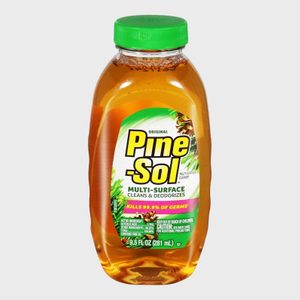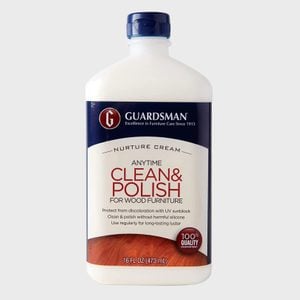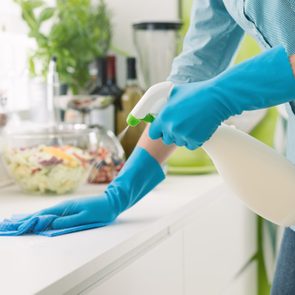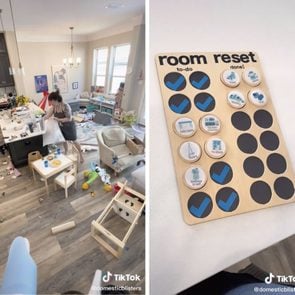How to Clean Wood Furniture to Restore Its Luster
Updated: Jun. 21, 2024
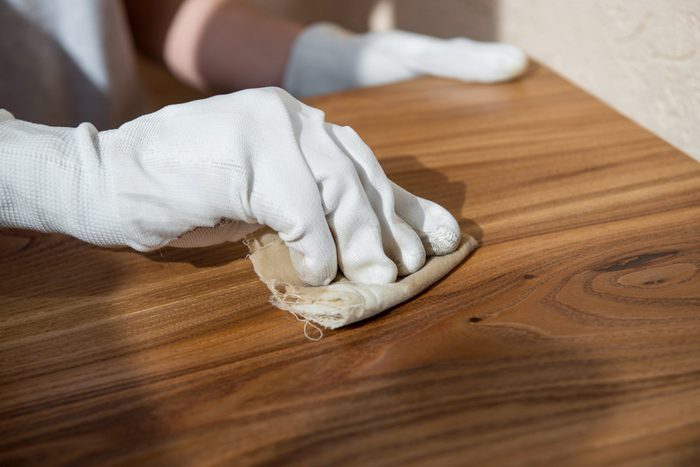
Wood furniture is beautiful in any room, but only if you clean and dust it regularly
Our editors and experts handpick every product we feature. We may earn a commission from your purchases.Learn more.
Solid-wood furniture is often passed down from generation to generation, linking memories of the past with experiences of today. If those layers of polish and wax could talk, do you know what they might say? Clean me!
This is not to cast aspersions on anyone’s cleaning schedule. I’m sure your great-grandma could teach you a thing or two about how to clean your kitchen. But furniture that’s passed down, or even a bargain piece you snagged at a yard sale, may not have always been treated with TLC. Very often it is in need of a good cleaning, along with a solid maintenance plan.
Problem is, there are so many products on the market, it’s hard to know which you should use. And to make the situation even more confusing, experts disagree on basics such as how to clean a wood table or how to clean wood furniture.
When we asked Diane Amos, aka the Pine-Sol Lady, for advice on how to clean wood furniture, she reminisced about a furniture cleaning chore she’s been doing since she was a child. “I have a memory of dusting with my grandmother and getting to pick the pretty little doily runners she had for her side tables. I also recall feeling the pride that came from doing a good job.” Get ready to feel the pride yourself as you follow her top tips for dusting and cleaning furniture. Also, don’t forget to explore how to remove water stains from wood.
How often should you clean wood furniture?
The universal response to the query “How to clean wood furniture” is simple: dust it. Amos recommends dusting at least once a week. But do a good job, she says. Don’t just dust the top and quit. Where’s the pride in that? Dust the entire piece, top to bottom. That makes everything look clean and cared for.
About once a month (more often if you have pets, a large family or lots of company), take time to clean your wood furniture. Wipe away those sticky fingerprints, hardened ice cream drips, dried-on pizza sauce and other mealtime souvenirs before they dull the furniture’s finish.
Furniture should be deep-cleaned when wax and polish buildup has so dulled the finish it cannot be buffed to a shine. To remedy this, you should remove the product buildup. Then, minimize future use of polishes and waxes.
Dusting wood furniture
Supplies:
How to dust:
Many people think dusting is passing a dry cloth or a feather duster over a surface. That surely moves the dust, but it doesn’t necessarily remove it. To dust effectively, dampen a soft cloth very lightly. Amos likes microfiber, but you can use any soft cloth like an old tee shirt. (Just make sure it doesn’t have buttons, zippers or rough edges.)
Starting at the top of the furniture and working your way down, gently wipe with the grain, turning the cloth as it gets dirty. Dust is actually abrasive, so go easy when you wipe, and use very light pressure, especially on tabletops, so you don’t damage the finish.
Dust small areas at a time, drying the newly dusted surface as you go with a soft towel or a cloth.
Don’t skip over the legs of the furniture. (Everybody appreciates a good-looking set of legs, right?) Wipe the legs, top to bottom, and dry them completely with a soft towel.
How to clean wood furniture
Finished furniture
Supplies:
- Microfiber cloth
- Toothbrush
- Dawn Dish Detergent
- Original Pine-Sol Multi-Surface Cleaner
- Guardsman Nurture Cream Furniture Polish
Directions:
- Thoroughly dust furniture using a lightly dampened cloth. Dry with a soft towel. Use a soft toothbrush to remove dust from decorative carvings.
- If the furniture is finished, either sealed, painted or lacquered, check the high-touch areas for wear. (Worn areas will appear lighter.) These areas are more porous and absorb water more quickly, so minimize contact with water or liquids.
- Wet a cloth with warm water. Wring the cloth out well, then wipe the surface of the furniture lightly. Repeat as needed, turning the cloth as dirt transfers onto it. Rinse the cloth in a separate bucket of water so you don’t dirty your cleaning water.
- If dirt or stains persist, step up to a stronger cleaning product like dish detergent (2 teaspoons in a gallon of warm water) or a cleaner that does not contain ammonia and is safe for sealed wood, like Original Pine-Sol Multi-Purpose Cleaner (¼ cup in a gallon of warm water). Always test the cleaner first in an inconspicuous spot to make sure it’s safe for the furniture. Dip the cloth in the solution and wring it out well. Wipe the stain lightly, repeating as needed. Rinse the area with a cloth slightly dampened with water. Dry the area completely.
- Another option is to use a special cream polish for wood furniture. Apply a small amount to a clean, soft cloth and gently apply it to the furniture. Follow the product directions, and always test the product first in an inconspicuous spot to make sure it’s safe for the furniture’s finish.
Unfinished furniture
Supplies:
Directions:
- Unfinished, unsealed, unpainted, waxed, oiled or worn wood is porous. Use as little liquid as possible, and dry the surface quickly.
- Safe cleaning choices for unfinished wood include plain warm water, a mixture of 1 to 2 teaspoons of mild dish detergent in a gallon of water, or 1 tablespoon of vinegar in 4 ounces of water. Lightly moisten a sponge or microfiber cloth with the cleaning solution, and wring it out well. Wipe the furniture. When using anything but plain water to clean, rinse with a slightly dampened microfiber cloth. Dry the area completely.
- If the stain or dirt persists, try a mixture of equal parts white vinegar and water. Apply with a soft cloth or lightly scrub with a soft bristle toothbrush. To rinse, wipe the area with a clean, slightly dampened cloth. Dry using a soft towel or cloth.
How to deep-clean wood furniture
If you polish or wax your wood furniture frequently, the product will build up and eventually dull and possibly harm the furniture finish (especially products containing silicone). To restore luster, remove this buildup with a deep-cleaning. Here are some suggestions for doing the job.
How to deep-clean wood furniture with black tea
Supplies:
- Two bags of black tea
- Microfiber cloth
Directions:
Tea does more than refresh. The tannic acid in black tea can remove waxy buildup on furniture. Follow these steps.
- Steep 2 tea bags of black tea in boiling water and allow it to cool.
- Slightly dampen a soft cloth with the tea, then, working in small sections, wipe the furniture in the direction of the grain, going from top to bottom.
- Rinse the cloth in clean water as it gets dirty. Wring it out well, then dampen it again in the tea.
- Continue wiping the furniture, drying it as you go.
- Rinse with a soft cloth slightly dampened in clean water.
- Dry, then buff the wood with a soft cloth to finish.
How to deep-clean wood furniture with commercial wax and polish remover
There are several commercial products for removing built-up wax and polish on furniture. Follow package directions.
Supplies:
Directions:
- Apply the wax remover. (Liberon suggests using extra-fine steel wool.)
- Wait a few minutes for the remover to work, then wipe off the old wax with a cotton cloth.
- This process should be repeated until all the old wax is removed.
How to deep-clean wood furniture with mineral spirits
Mineral spirits are an inexpensive, effective solvent for removing polish, wax or oil buildup, but keep in mind that mineral spirits are flammable and should only be used in a well-ventilated area, away from flames. Although mineral spirits are usually safe for use on clear finishes, always test a small dab in an inconspicuous part of the furniture to make sure it doesn’t damage the finish.
Supplies:
Directions:
- When deep-cleaning with mineral spirits, wear nitrile cleaning gloves.
- Wet a soft cloth with mineral spirits.
- Starting at the top of the furniture and working down, wipe with mineral spirits in the direction of the grain.
- Continue until the cloth no longer picks up dirt and grime.
- Mineral spirits and all items used with mineral spirits are flammable and are considered hazardous waste. Consult your local government to find a nearby hazardous waste disposal facility.
How to remove water stains from wood furniture
We’ve all had those moments where we forget to use a coaster, and the next thing you know a water ring appears on your favorite table. No need to worry. We’ve got the scoop on how to remove water stains from wood furniture, including hacks from mayo to salt, toothpaste to heat. Or, you can use a commercial water-stain remover like Howard Restor-a-Finish to get the job done.
How to keep wood clean
Besides dusting with a damp cloth every week, wood furniture can benefit from occasional polishing. Not only does polishing keep your furniture looking beautiful, it also repels dust and helps to keep liquids from going into the wood grain and damaging it.
Some furniture companies recommend polishing furniture every six months. Others recommend polishing every six weeks. How often you polish your furniture depends on how often you use it and how often you clean it. Every time you wipe or scrub, you remove some of the polish on the furniture. You’ll know it’s time to apply more polish if buffing the furniture no longer makes it shine.
The best wood furniture cleaners
Caring for brand-new or newly refinished furniture
During a recent interview with Reader’s Digest, Walter Weathersby, the owner of Weathersby Furniture Repair in Slidell, Louisiana, recommended a simple way to care for brand-new or newly refinished furniture: Dust it with a microfiber cloth slightly dampened with warm water. Dry it with a soft towel. That’s it.
“The finish on a brand-new or newly refinished piece of furniture is hard and not contaminated by cleaning products, so it should last 20 years, depending on use,” he explained. “That’s why you don’t want to introduce polishes, especially spray polishes, waxes or something like that. Anything—particularly spray polish—that you put on a sealed finish is going to leave a residue on top. That dulls the finish and attracts particles in the air to adhere to the table. Consequently, you’re going to go back to the spray polish, or whatever you’re using, and that’s going to add to the buildup. Also, some spray products contain silicone, which softens furniture finish and diminishes its life.”
Weathersby adds that if you are faithful in cleaning your furniture with a damp cloth every week, you can eliminate monthly cleanings. If you need extra help removing stuck-on food, add a dab of cream polish (he uses Mohawk OZ Cream Polish) to a damp cloth and work it around the stuck-on food to loosen it.
Keep in mind that Weathersby’s suggestions are for brand-new or newly refinished wood furniture only. When it comes to caring for your grandma’s table, he says if it looks good, treat it the way your grandma did. “Keep on keeping on with her cleaning routine, as long as it’s working.”
Professional tips
- The best way to preserve the finish of your furniture is to dust it every week with a slightly damp microfiber cloth or other soft cloth. Buff the surface dry.
- Don’t over-use furniture polish. Instead, buff with a soft cloth to bring up the shine on dull furniture.
- Never use spray polishes containing silicone.
- Protect surfaces like dining tables by always using coasters, placemats and hot pads.
- Use felt pads under lamps, vases, statues or anything that could scratch the surface when moved.
- Do not let plastic, nylon or rubber remain in contact with wood. This includes rubber feet on computers and clocks.
- Wood is sensitive to heat, humidity and sunlight, so keep furniture away from fireplaces, heating and cooling vents, humidifiers and windows.
- Control the humidity in your house. Too dry, and wood can crack; too humid, and wood can swell. Use a humidifier if you live in a very dry climate; use dehumidifiers in very humid climates.
- Use a protective mat to protect wood surfaces when writing with a ballpoint pen.
Source:
- Walter Weathersby, owner of Weathersby Furniture Repair in Slidell, Louisiana





















